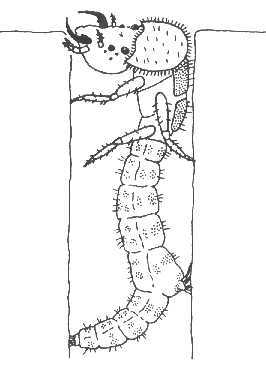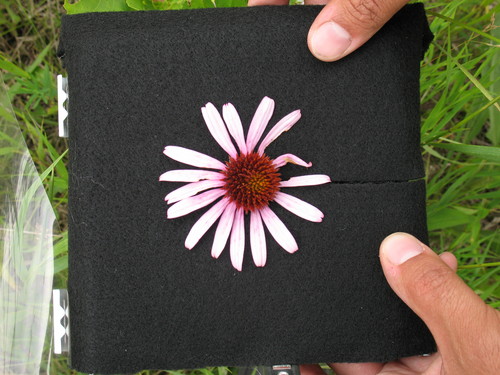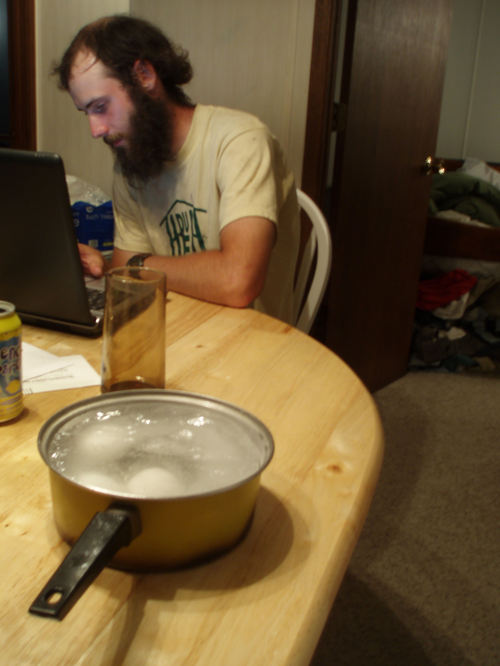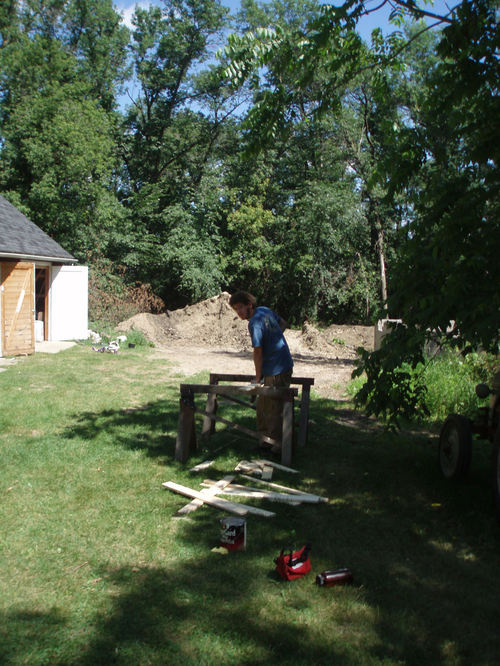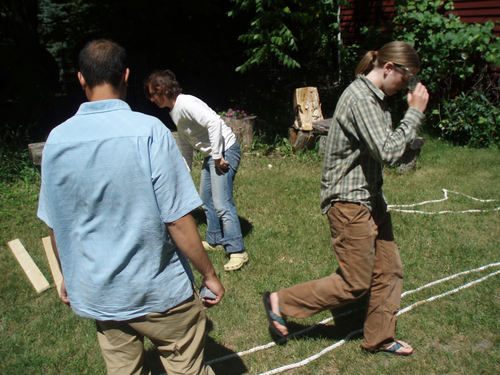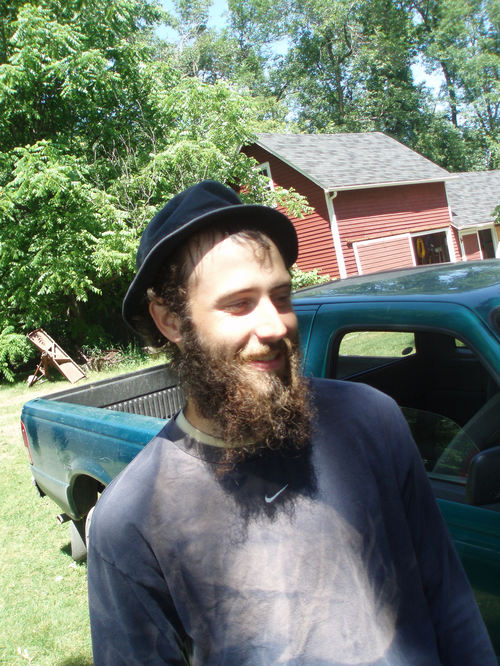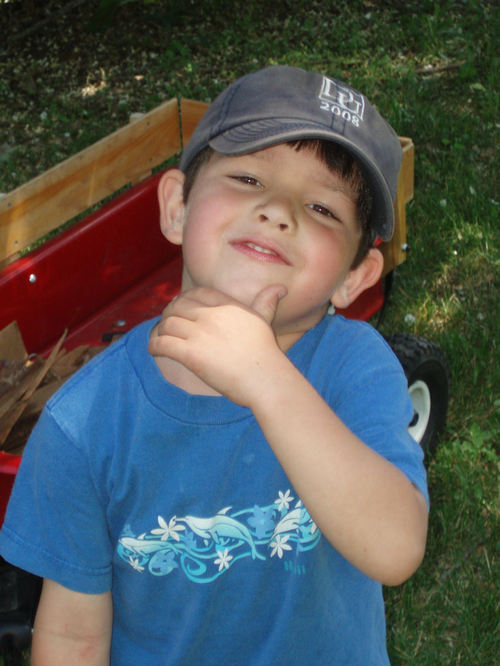|
|
Despite delays on the runway in Chicago due to rain and a well planned air show I did make it home. I apologize for the delay in posting, I’ve had a busy few days. Unpacking, doing laundry then immediately repacking takes it out of me. I hope that your final week(s) are as fun as the previous 9. I will continue to either blog or mass email about things that may or may not concern Echinacea.
A note: After looking at my mom’s purpurea I’m very glad that we study angustifolia. There are about six billion rosettes and heads on each plant.
With the influx of work related postings, I thought I would shed some light on the day to day goings-on of the Andes’ condos.
Specifically, I will cover the activities of the 3-bedroom-condo, fondly dubbed “The Mando” (though it is now slightly inaccurate as Jennifer has been living here for several weeks now). I exclude the 2-bedroom-condo, fondly named the Raj-Mahal, not out of spite or ill-will but rather because they’re crazy and I don’t know what they do all day.
The Good:
We continue to improve our living situation by adding a mass supply of cereal, donated by the kind folks of “Sweet Retreat”, the Bed and Breakfast that Jennifer’s parents stayed in this last weekend. It seems that Post cereals gives away huge numbers of sample boxes to B+Bs everywhere, and by some good luck and friendly coercing we’ve managed to procure 144 sample-sized boxes of “Blueberry Morning” and “Cranberry Almond Crunch”. We also continue to supplement our food budget, though the pheasant supply has slowed. We continue to pursue alternative food options. I’ll leave that open to interpretation.
The Bad:
The cereal donation wasn’t entirely beneficial, and did create some negative emotions. Jennifer specifically was influenced by the free food. Who can blame her, “absolute power corrupts absolutely”. And by “absolute power” I mean sample boxes of cereal, and by “corrupts absolutely” I mean causes her to blame me for its disappearance. We also seem to have run into a bought of clumsiness around the Mando. With freshly burned hands, smashed fingers and chiggered bodies, we persist. Hopefully this accident prone streak will fade in time.
The men of Denison are approaching the end of our stay here quickly, with less than 3 weeks left in Minnesota. We will continue to live interesting lives here Douglas County, and I will continue to provide the lovely details.
Do You Know What Kind of Insect This Is?
Team Echinacea sure didn’t until some crafty web searching informed us that these mysterious holed creatures are the larvae of Tiger Beetles. A frustrating day a few weeks ago was spent trying to figure out what lived in these 1 centimeter in diameter holes. Careful observation seemed to disprove what we had always assumed before; that they belong to the solitary bees that pollinate the Common Garden. You know what they say about when you assume…
What you can see is the underside of its head, as is visible in the diagram below.

(Diagram from Westminster College)
The larva at the top is sitting and waiting for something edible to walk by before it attacks. Apparently the bottom one confused the nearby rock with actual prey. This footage was acquired in the common garden with the assistance of excess equipment from Team Video.
Had that rock actually been an ant the larva would pull it to the bottom of its hole (which can be up to 1 meter long) and devour it. Later it will fling the indigestible exoskeleton out. Additional footage captured the larvae flinging dirt out while expanding its home. Simply more information about the inhabitants of the Common Garden.
A protocol for Team Video is in the early stages, and there are many aspects to consider. While it started slow, we have found a relatively quick and efficient system for placing cameras, taking down and storing cameras, and uploading videos. Unfortunately, many additional challenges await.
Watching the 2+ terabytes of footage will be a long and arduous task, and it is therefore key to plan well in these early stages. I believe the most important questions to ask at this phase are:
What data are we looking to collect?
With so much footage we have captured a lot of different things that we could potentially measure. We can see thrips on nearly every head we’ve recorded. We also have seen many ants, though typically of only two main species. Previous hypotheses about the roles of these ants have been posted, and the videos of the flowering heads would be a great resource for anyone wanting to find out more about them. As of now (though I’m not entirely sure as I haven’t thoroughly consulted with the rest of Team Video) I believe we are only going to record information about the insects that visit the heads and not their permanent residents.
What is the most effective/efficient way to collect these data?
This project cannot be done quickly or easily. Every day that we record in the Common Garden we get about 7-9 hours of footage per camera. With ten cameras rolling that is 70-90 hours of footage to watch per day. If we record for 5 days in a week (not uncommon) we then have 350-450 hours. That’s a freakin’ lot of video! Efficiency is key, but as a wise man once said “We’re looking to increase efficiency without losing accuracy”.
It is at these questions that I hit a wall, and would appreciate the input of my fellow bloggers/fans of the blog. As of now we have been using a video player that has the capacity to fast forward at speeds up to 32x, where should the line be drawn? At some point well below the 32x speeds, we might start missing things. Some bees only remain on the flower for a second or two before leaving, and the watcher of these videos may not catch these visits. However, there is really no way to watch these videos at normal speeds and expect to finish before the end of the decade (let alone the end of the summer). Also, a question directed at fellow Echinacea team members; are there data that you would like to be gathered from these movies that I haven’t mentioned? The ball has been passed into your court…
As the crew posts profiles of themselves, certain aspects of people’s personalities are inevitably left out. Our complex identities are unable to be fully described in a few short paragraphs. In an attempt to fill some of these holes, I present Julie Nicol.
Julie displays her talent.
Who would have known there are such wonderful animal impersonation talents in Team Echinacea. It appears that Jameson can do a killer cat impression too; we’ll work on getting it on camera.
A redesign of the original asymmetry contraption has finally reached (hopefully) it’s perfected state. With a black felt backing I was able to take several test pictures in the ’99 Garden South with the assistance of Dr. Andrew McCall.
One of these pictures was this beauty:

Later work with ImageJ allowed me to create a simplified version of the picture, with only the ray florets visible.
It looked something like this:

From this I was easily (with the help of a few lovely plug-ins), able to measure the areas of each ray floret. Thus, a measure of asymmetry is born!
On a note less related to Echinacea, I have realized that I haven’t loaded very many of my own pictures from this adventure. I then remembered that I hadn’t taken very many pictures, so in a frantic effort to catch up, I took a ton on a single day of work. So without further ado, I present to you the best of the pictures I have taken so far.
A Man and his Eggs.

Place of Work.

Man at Work.

Additional Folks at Work.

Jameson stole Per’s Hat…

…So Per stole Jameson’s Hat.

That’s all for now, I’ll get some more later. Maybe…
I am Colin Venner, Biology major from Denison University. Orignially of Saline, Michigan (just outside of Ann Arbor), I am in the class of 2009 and I am a Taurus (though I don’t fit the profile for one). I enjoy several different styles of music and have been known to “cut a mean rug”. When I’m not counting anthers of flowering Echinacea heads you can find me enjoying life and smiling frequently.

With a contraption built to take accurate pictures of flowering Echinacea heads, I assumed that fluctuating asymmetry (FA) measurements were just around the corner. Boy howdy was I wrong. It turns out, as Stuart has informed me, there are many ways in which to measure FA, each as viable as the next. The most apparent idea, though potentially most flawed, was to simply measure the length of each ray floret and compare that to its complementary floret directly across the disk. Measuring 2 pairs of florets per head seemed simple enough, though it was soon found that there are many problems with such a simple procedure. For example, this idea doesn’t take into account any herbivory/senescence that has occurred, though most methods don’t. Also, any difference in widths between the florets was ignored. This plan obviously had to go. The quick fix solution to this was to measure the width of each floret as well, and compare these numbers separately. This again causes problems, since it doesn’t take into account the varying shapes of individual florets, but rather the similarity of a total area. The florets can have a similar area and yet certainly be very much asymmetric.
The ultimate solution to these problems is to measure asymmetry with an all encompassing measurement rather than one that attempts to isolate single florets. Stuart suggested creating 2 circles of best fit; one around the ray florets and one of the disk itself (either the outer edge or the flowering anthers, both may present their own difficulties). These circles would each have its own center point, the disk circle would represent the “true” center of the head, while the ray center point would be altered by any asymmetry of the florets. The ray floret center point would be calculated based on the area of color, therefore taking into account the area of the floret without making any assumptions as to the shapes of individual florets. The difference between these two points would give a numeric value of asymmetry. It seems to be the best solution so far, but I’m open to any other suggestions. This plan, like the rest, definitely has its own problems.
In non-Echinacea related news, the chiggers continue to molest my legs, but have also (oh, so fortunately) moved onto the rest of my body. I now have a collection of bites that range from that spot between my shoulder blades that I can never reach, to inside my belly button, to the tops of my feet. Sure glad those suckers are small enough so I can’t see them sneak into all of my clothing, yet large enough to cause so much damage. I’ll keep you posted on how my itching develops.
Today was a day of firsts, realizations and first realizations. It was our first unexpected change in schedule due to weather, and realization that the early flowering of many plants will mess with pollination experiments. It was also our first day in the Common Garden and possibly first experience with chiggers, as we have many unexplainable itchy red bites. I think that we all realized that it’s going to be rough work out there. Mosquitoes swarm all over at all times, the sun/heat is unrelenting and there are thistle plants the size of Christmas trees to deal with. I realized that there is nothing better than a ridiculously long shower after a day in the field. It even seems to make sunburns hurt less, mosquito bites (of which I have many) itch less, and will always be the one place that ticks and chiggers can’t get me.
Day 4 of the Echinacea project and still no blog postings from the ladies of the group. Not to pass judgment on the fairer sex, but they seem to lack general motivation. Hopefully their negative attitudes improve with time.
Whilst strolling around Andes Tower- being eaten alive by mosquitoes- I found myself well beyond familiar territory. The black-diamond slope “Warmgear” had betrayed my trust and led me to a farm field much further south than I had expected. In the treck through the soybeans, I saw 2 white tailed deer in the distance. Distracted by their graceful loping, I was startled by an explosion of feathers from a cluster of brush nearby. The most tremendously obese turkey in the history of people was flapping frantically to remain airborne. As it struggled to move away from me I began to think that I could run faster than it could fly. As I continued back to the condos, I started to wonder if it would have been smarter to have attacked the turkey rather than simply watch it fly to safety in the woods nearby. Had I punched it in the head, as I suggested aloud to Jameson and Andy later, it may have helped me meet my $13 per week food budget. I suppose you live and learn.
Colin
|
|

